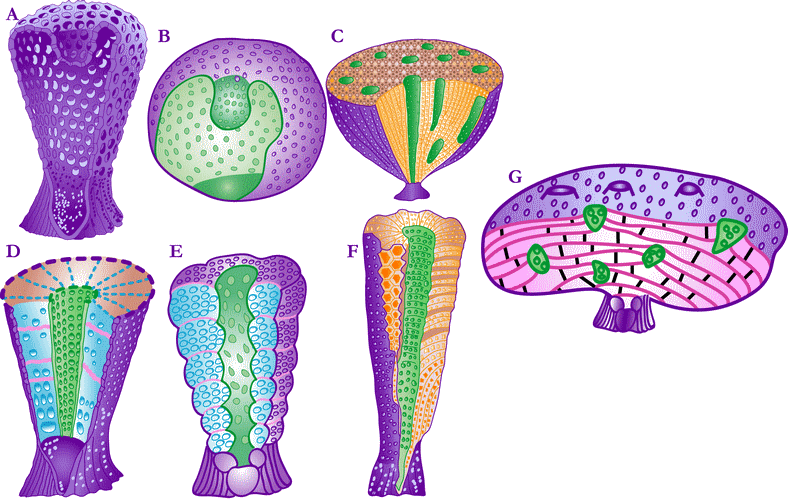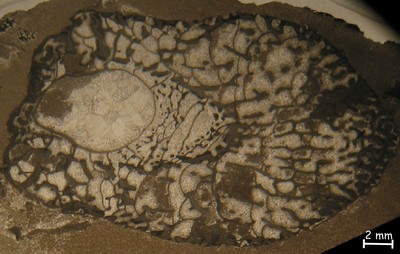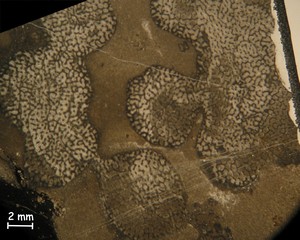 HOME
HOME


 License
License How to cite
How to cite ARCHAEOCYATHA
ARCHAEOCYATHARole in Cambrian
Morphology
Bibliography
 KNOWLEDGE-BASE
KNOWLEDGE-BASEGenera: 308
Groups: 10
Descriptors: 122
Properties
 INTERACTIVE KEY
INTERACTIVE KEYUser guide
Matching terminologies
Glossary
 PUBLISHED KNOWLEDGE-BASE
PUBLISHED KNOWLEDGE-BASE CONTRIBUTORS
CONTRIBUTORS
 CONTACT
CONTACT
Visitors:
Last modified : 18 November 2021
- ARCHAEOCYATHA - A knowledge base
Important: A new version of the identification key and of the knowledge base is available
The identification key is here http://archaeocyatha.identificationkey.org/mkey.htmlThe knowledge base is now updated here http://xper3.fr/xper3GeneratedFiles/publish/html/7713921382789369737/
Introduction
Archaeocyaths are exclusively Cambrian fossils. They built the first metazoans bioconstructions. Since the discovery of living aspiculate sponges, their systematic position has been controversial but now a consensus has been found: archaeocyaths represent an extinct class of the phylum Porifera, closed to the Demospongiae. (Debrenne & Vacelet 1984).The archaeocyathan skeleton is often composed of two inverted porous cones, fitting into each other, interpreted as outer and inner walls delimiting the intervallum. Vertical radial elements (septa, taeniae...) and/or horizontal elements (tabulae) connect the two walls.

Figure 1: Stylized archaeocyathan skeleton (DEBRENNE 1964, modified)
The archaeocyathan cups display various architectural types: one-walled conical, single-chambered subspherical, multi-chambered conical (thalamid), chaetetid, and syringoid.
Figure 2: Different architecture of archaeocyathan cups
(DEBRENNE, ROZANOV & ZHURAVLEV 1990, DEBRENNE & ZHURAVLEV 1992b, modified
© Publications Scientifiques du Muséum National d'Histoire Naturelle, Paris)
 |
SOLITARY |  |
 |
MODULAR |  |
Figure 3: Examples of solitary and modular archaeocyathan (A.KERNER)
Archaeocyathan systematics is based on skeletal ontogeny determining the order of appearance of skeletal elements, their complexification and the stabilization of adult features (Debrenne et al. 1990, Debrenne & Zhuravlev 1992b and Debrenne et al. 2002)- Orders are characterized by the architecture of cup
- Suborders by the growth pattern models
- Superfamilies by the outer wall types
- Families by the inner wall types
- Genera by variations in walls and intervallar primary types and distribution of pores in each element
- Species by different numerical coefficients
